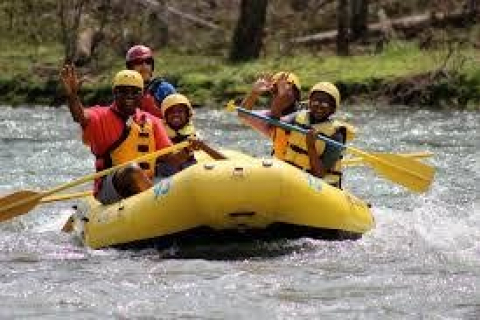Planning a family fishing trip sounds simple until you realize that keeping a six-year-old entertained looks nothing like keeping a teenager happy, and neither resembles what adults want from a vacation. The American West offers incredible fishing opportunities, but finding locations that work for everyone takes more thought than just picking a river with good trout numbers. Booking a qualified giant raft guide can make all the difference—transforming an ordinary fishing trip into a scenic, family-friendly adventure where everyone can experience the thrill of the river together.
The secret to a successful family fishing vacation is choosing destinations that offer variety beyond casting lines. You need backup plans for when the fish aren’t biting, alternative activities for those who’d rather not fish, and enough comfort at day’s end to keep everyone happy. Adding a knowledgeable raft guide to float scenic rivers can turn an ordinary fishing day into an unforgettable adventure.
Choosing the Right Destination
Not all fishing destinations are family-friendly. You want reliable fishing that doesn’t require expert-level skills, safe wading conditions, and a location with fun alternatives nearby. Rivers with easy access, nearby towns, and diverse water types work best.
Tailwater fisheries below dams often provide the most consistent experiences. The regulated flows mean safer conditions for kids, and the steady water temperatures keep fish active throughout the day. Mountain lakes also make excellent choices for young anglers who may struggle with currents.
For more inspiration, National Geographic Family Adventures is good for nature-based family travel.
Timing Your Trip
Summer may seem ideal, but it’s not always best for fishing. Many Western rivers warm up in July and August, making fish less active. Early summer or early fall usually offer better fishing and pleasant weather for families.
If you’re flexible, consider spring break or early fall trips—when the crowds are smaller and fish are more aggressive. Outside Online shares great insights on seasonal outdoor planning.
Accommodations Matter More Than You Think
After a long day outdoors, comfortable lodging can make or break the trip. Cabin rentals or lodges with kitchens provide flexibility and space for everyone. Staying close to the water—ideally within fifteen minutes—helps maximize fishing time and minimize backseat complaints.
Proximity to town also helps for restocking supplies or finding alternative entertainment when weather changes.
Gear and Preparation
Don’t buy everyone new gear until you know they’ll enjoy the sport. Many destinations offer rentals, which let you experiment before investing. Younger children often prefer simple spin-casting gear over fly rods.
Mountain weather changes fast—pack layers for all conditions. Having resources like Backpacker Magazine helps you stay prepared and safe.
Managing Expectations
Here’s the truth: your family fishing vacation won’t look like the glossy magazine photos. Kids will tangle lines, someone will fall in, and fish won’t always bite. The goal isn’t perfection—it’s shared fun.
Celebrate small wins. A child’s first trout might be more exciting than a trophy catch. Keeping expectations light helps everyone enjoy the trip more.
Activities Beyond Fishing
Plan non-fishing options like hiking, swimming, or wildlife watching. Many Western destinations offer mountain biking or scenic drives. Variety keeps the trip exciting and lets everyone find their favorite part of the outdoors.
You can explore adventure ideas from Adventure Journal, which focuses on family-friendly outdoor activities.
Food and Family Morale
Snacks are your secret weapon. Pack energy bars, fruit, and plenty of water. Hungry kids are unhappy kids—and unhappy kids make for short fishing days.
Simple, easy-to-cook dinners help maintain a relaxed atmosphere after long days outdoors. Avoid complicated meal prep to keep evenings stress-free.
Teaching and Conservation
Fishing trips are full of teachable moments. Show kids how rivers work, explain fish habitats, and practice catch and release whenever possible. These lessons stay with them long after the trip ends and foster appreciation for nature.
Encourage curiosity—spot birds, watch insects, and discuss the balance of nature. That sense of connection builds lifelong respect for the outdoors.
Safety First
Safety should always come first. Kids should wear life jackets near water, no exceptions. Western rivers can be deceptively strong, so set clear boundaries and teach children how to recognize unsafe areas.
Understanding water safety builds confidence and independence as they grow.
Building Traditions
The best family fishing vacations become annual traditions. Returning to the same river or lake builds confidence and lasting memories. Over time, kids learn new skills and look forward to revisiting familiar places each year.
A successful trip isn’t measured in fish caught—it’s measured in laughter, stories, and the shared desire to return. Plan smart, stay flexible, and remember: the worst day fishing together still beats the best day apart.

